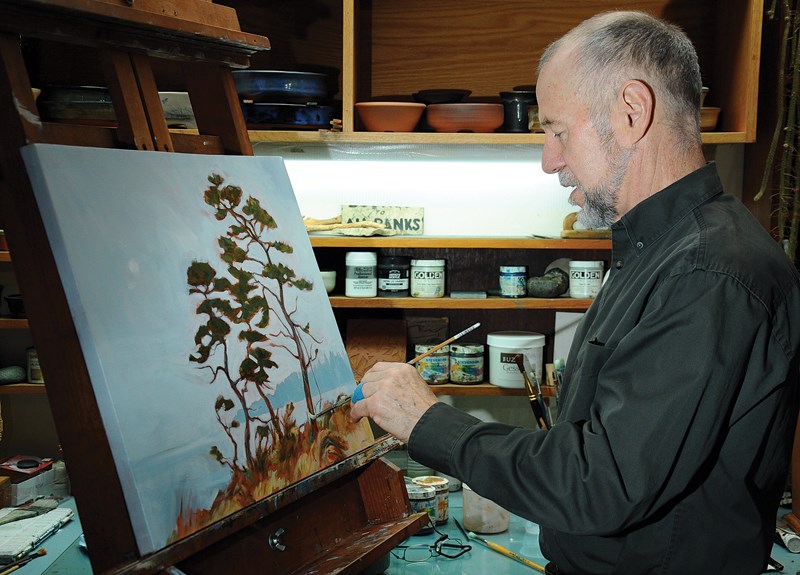Deep Cove watercolour artist Ross Munro has gotten a bite from the Big Apple.
While his painterly landscape interpretations adorn the walls of B.C. public buildings and corporate offices, New York City is new territory for the artist.
Months ago Munro saw a call for Canadian artists to exhibit at the Marbury gallery nestled in New York’s Gramercy neighbourhood. Ahead of Canada’s 150th birthday, the gallery curated a collection of works from some creative neighbours to the north for its local celebration of Canuck artists.
Munro got the nod from the selection panel. His distinctly B.C. landscapes are on display for the exhibition 49 at 74, Canadian Works on Paper, running March 9- 30 at the Marbury.
Paring down which paintings to send to New York was no easy task for the prolific artist who has been at it seriously since the 1980s. In the end, Munro went with the watercolour paintings that would photograph the best. He also parted with one of his favourite pieces: the landscape shows soft summer colours in the Slocan Valley, a place Munro has good memories of.
“But if it sells down there, that’s fine too,” the artist says of his cherished watercolour.
B.C.’s natural splendor is Munro’s muse. Mostly he canoes, his drawing tools tucked beside him, and surveys the landscape for inspiration. He’ll spot a stony ridge in the middle of a lake surrounded by trees and capture it through broad brush strokes.
“I combine being outdoors and camping and that kind of thing with my drawing and painting,” says Munro. “I love British Columbia. I love the mountains and the water, they all sort of come together here.
“It takes me a while when I go somewhere to respond to the different look of things, the landscape.”
Munro also draws inspiration from his scenic surroundings in Deep Cove and Indian Arm. But you won’t catch Munro toting a camera. He doesn’t paint from photos.
“It makes a lot of difference,” explains Munro. “If I work from a photograph it tends to be more photographic. When you take a picture with your camera it’s not the same as what you see.”
Munro does a lot of drawing on location but doesn’t usually paint en plein air.
“I find that I can get a lot more done with a day if I’m doing drawing. And then I work on them back in the studio where I spend most of my time anyway,” he says.
A professional artist for many years, Munro picked up a paintbrush early.
“I’ve always loved drawing and painting. My mother would draw. She’d paint,” he recalls.
Munro found he had an innate ability to draw and started by sketching birds. He then went through an abstract phase during his teen years before eventually graduating to full landscape paintings, which are now his forte.
It was during a trip across Manitoba many years ago, when Munro was commissioned to do a series of watercolour paintings, that an unfamiliar landscape shifted his perspective as an artist.
“And as I was driving across the Prairies it took me a while to really see what I wanted to do with it, because it’s so different than what I do here,” recalls Munro.
The largely self-taught artist also works in acrylics, some of which have hung at the Vancouver Art Gallery, and offers painting lessons in his Deep Cove studio. Munro’s work has been featured in numerous solo exhibitions at the Seymour Art Gallery, as well as North Vancouver City hall and the courthouse.
Flights of pure imagination have their place in Munro’s painting as well. When he’s feeling whimsy, Munro will draw caricatures of his dog, a wire-haired Jack Russell.
“I do drawings of him reading a book or his different moods, that kind of thing,” he says with a laugh.
Early Canadian painter, printmaker and writer David Milne is an artist who Munro admires because of the simplicity and “great draftsmanship” of his work.
So what does Munro hope will come of the Canadian artists’ exhibition at the Marbury?
“Well I’d like to think that people there will see Canadian art more broadly than they do,” says Munro. “Maybe it would help open up a blind spot. I think Canadian art is expanding a lot just in the last couple of years.



